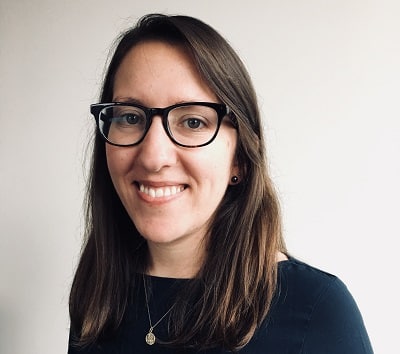Welcome to our “Innovators Worth Watching” series, spotlighting interesting and potentially disruptive players across a spectrum of industries.

Many students describe their state of mind in high school as “bored”—not a ringing endorsement of school. Meanwhile, some experts worry about whether schools are successfully preparing students with the higher-order skills necessary for an uncertain future of work. What’s to be done?
For some educators and leaders, there’s a “two birds, one stone” answer: project-based learning (PBL). PBL is said to be more engaging for students and supportive of 21st-century skill development and deeper learning. Over 3,200 schools have indicated a commitment to “High-Quality PBL,” and our recent Canopy analysis suggests that PBL is one of the most common approaches among schools that are innovating.
But implementing PBL and other inquiry-based instructional approaches can prove difficult. Leaders and experts cite myriad reasons why creating engaging, interest-driven, and authentic learning experiences can be challenging, ranging from a lack of resources and teacher training to a misfit between project-based methods and standardized testing. In other words, PBL is facing a growth challenge. It can’t gain widespread acceptance until it becomes easier to adopt and implement.
Disruptive Innovation Theory illustrates how more affordable and accessible products and services that initially underperform on traditional metrics can improve over time and gain widespread adoption. In K–12 education, we’ve identified that online learning bears the markers of disruptive innovation, but how does PBL fit? Are innovators working to expand simplicity and affordability of project-based approaches to make adoption and implementation easier? Can their innovations help unleash more PBL throughout the core of our public education system?
Sora Schools, an online private high school that launched this year, is working on those answers by experimenting with a model that’s fully project-based, which we don’t often see in virtual schools. Sora’s online learning model centers on collaborative, student-driven projects as a vehicle for building knowledge and skills, which the school maps onto a competency framework. The school operates virtually through a combination of daily morning meetings, Friday showcase sessions, and direct support from counselors and learning experts (teachers). Students design individual and group projects, with progressively more independence over time. Teachers assess students based on demonstrations of project progress in 1:1 meetings, as well as through short, formative quizzes. The school offers students a high degree of autonomy in their learning—only about 20% of a student’s time is structured by Sora.
Given the combined potential of online learning as a disruptive force and PBL as an ostensibly more engaging approach to developing academic and career-aligned skills, we dug into Sora’s model to probe for disruptive potential relative to conventional instruction in public schools.
1. Is the innovation geared toward nonconsumers or those overserved by existing offerings?
Somewhat. Sora’s founders describe their current student body as mostly homeschooled students, along with a few students for whom a conventional high school just wasn’t the right fit. Some of these students may be nonconsumers because conventional school is inaccessible for one reason or another. However, given that public school is free and ubiquitous, there isn’t a large market of nonconsumers of school whose only other option is nothing.
It’s most likely that Sora’s consumer base are those who are overserved by existing offerings: they’re happy to forego some of the features of traditional high school in favor of other desired benefits like flexibility and customization. These consumers could encompass homeschoolers as well as students who feel that conventional school isn’t a great fit, but for whom full homeschooling isn’t an option.
But it’s not all roses: while there’s some evidence that homeschooling is growing, we don’t predict that population will grow massively because of the important custodial function that brick-and-mortar schools play.
2. Is the offering not as good as existing offerings as judged by historical measures of performance?
Yes. Sora does not offer many of the bells and whistles of traditional high school—athletics, AP classes, custodial care during the school day, prom, etc. Also, student outcomes like test scores and college acceptance rates have long been the historical measures of performance for schools. Sora may well prove exceptional in these areas over time (if it chooses to prioritize them), but since it is new this year, it cannot yet offer evidence on these traditional measures of student outcomes.
3. Is the innovation simpler to use, more convenient, or more affordable than existing offerings?
It depends. In terms of cost, Sora is less expensive than other project-based private school options (its founders estimate that local options near their Atlanta headquarters cost up to $2,000 a month, while Sora charges $800), but more expensive than free public school.
In terms of convenience and customization, Sora harnesses the benefits of online learning by offering students an extremely flexible schedule and lots of choices. Its project-based instructional model is fully customized to students’ interests, with substantial one-on-one support from learning experts and counselors, and connections to professional mentors and internship opportunities.
However, some of the challenging logistics associated with virtually attending Sora will override the apparent simplicity for some students and families. The model asks families to provide essential components that normally schools would offer: a place to study and work, internet access, project materials, and adult supervision if necessary. Furthermore, with 80% of their time unstructured by Sora, students need self-regulation and project management skills to stay on track with their work, or have access to additional supports to develop these skills over time. Finally, as we’ve written, schools working with demanding (and underserved) student populations will likely fail to deliver breakthrough academic outcomes without integrating poverty relief measures like health services into the education system. Sora’s founders have said that they plan to work on measures to make Sora more accessible for a wider variety of family circumstances.
4. Is there a sustainable, innovative business model?
Unclear. Sora is just getting started this year. Current projections show that tuition will cover staff and operational needs at scale. The founders hypothesize that they will achieve some efficiency by deploying faculty virtually to any student regardless of geographic location—in other words, the model lends itself to a particularly dynamic staffing model by dispensing with the need for adults to be anchored to a given classroom. But ultimately, this model will have to prove itself out over time, since it’s possible that coordination of support around a diversity of student needs in a virtual environment could require more resources than expected.
5. Are existing providers motivated to ignore the new innovation and not feel threatened by it at the outset?
Yes. Sora is currently very small (8 students), and mostly serves homeschooled students who have already opted out of the public system, so for now, it doesn’t present a major threat to public schools’ funding sources. It’s also still focusing on proving out its project-based model, and until that model demonstrates its success and leads to scale, it will not be seen as a competitor.
Sora’s founders plan to work more closely with the public education sector over time, but first by offering supplemental education experiences and after-school programs via its project-based, virtual model, rather than moving immediately to replace core subject instruction. This strategy is consistent with a disruptive strategy, where innovations take root on the margins of a market with a runway to improve before moving into the core.
6. Does the offering have a technology that enables it to improve and move upmarket?
Not yet. Sora’s founders run a lean operation by using existing online content, as well as collaboration tools developed in corporate contexts, rather than developing these in-house. Using online content reduces the amount of direct instruction that learning experts must shoulder, allowing them to focus more energy on advising students and facilitating projects. Collaboration tools create administrative efficiencies, freeing up additional faculty time.
However, Sora’s project-based model will likely face another challenge around improvement and scale. Each student’s learning trajectory is unique and projects are designed on-the-go, meaning that the school has little use for ready-made curriculum and assessments. Instead, the school relies on learning experts to manually curate online resources and create assessments for students, including formative quizzes and performance assessments during 1:1 sessions. Sora’s founders recognize that this manual curation will be difficult to maintain as the school grows, particularly if faculty caseloads increase (currently the school employs two learning experts and one counselor for its eight students). The school has plans to automate some of these functions in the future, but they are not currently developing technology for it. Lastly, finding enough teachers well-versed in performance assessment—or training them to maintain the consistency of these assessments—may also present a barrier to improvement and scale.
Expanding Sora’s disruptive potential
We set out to explore whether Sora’s online, project-based model holds disruptive potential relative to conventional instruction in public schools. Based on our analysis, the model has potential but isn’t yet squarely disruptive. We’ll keep watching to see if the school pivots in ways that lean into that potential.
For example: As a complete alternative to public school, Sora will struggle to find enough overserved consumers or nonconsumers to pave a disruptive runway. However, as noted above, Sora’s founders are exploring the idea of offering virtual project-based experiences in partnership with schools. Could Sora show that its model implemented within a school system enables more affordable PBL than the school could otherwise offer? If that happens, Sora could potentially tap a much larger group of nonconsumers in the form of students without access to project-based learning experiences in their existing schools.
A different pivot that could enhance Sora’s disruptive potential would be to pursue an “enriched virtual” blended learning model that maintains most of the learning experience online, but offers key in-person interaction and student supports. This integration could make the school more attractive to a wider variety of students.
We’re intrigued by Sora because while online learning can crack open time, place, path, and pace of learning, we haven’t yet seen strong examples of technological enablers to scale inquiry-based learning. Sora has the opportunity to take a crack at this nut, especially when it comes to scaling assessments that reliably connect students’ project work to the school’s competency framework. In the school’s infancy, it will still face some of the same barriers to scale that existing in-person PBL models face. But we’ll keep an eye out to see if Sora can shed light on how to democratize access to more engaging, career-connected, and interest-driven learning experiences.


